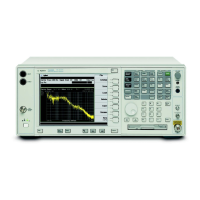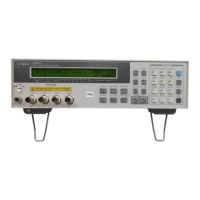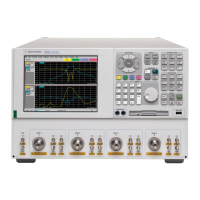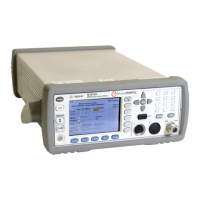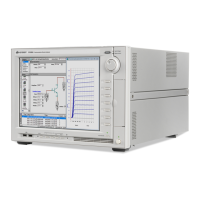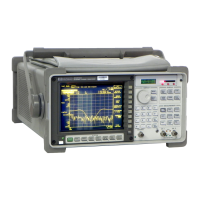Installation
HP-IB/RS-232 interface board information
51
5. Test 4 will verify your selection of type of interface and either its
address or its baud rate. Pressing the number 4 on the keypad will
display a message RS-232 Baud = the selected rate or HP-IB Addr the
selected address. If the display indicates an incorrect type of interface,
address, or baud rate, turn off the instrument’s power and reset the
toggles of switch S1 on the interface board.
6. When the proper interface and baud rate or address is displayed,
entering the number 7 on the keypad allows you to restart the system
with all of the new parameters just entered.
The display will prompt you to press the ENTER key. When the ENTER
key is pressed, the instrument will undergo its standard self•testand the
new parameters will be configured into memory.
Tests 1, 2, 5, and 6 are used as diagnostic tools for troubleshooting.
Test 1•Short Memory Test displays TEST 0000. This rapidly cycles
through memory pages incrementing the test number to determine if all
256 1K pages are accessible.
Test 2•Long Memory Test (about 15 minutes) initially displays Set
Memory to 0’s, then changes to Bank: 000, PASS: 000 during the test. The
bank number will cycle through 0 ... 255, displaying the number of the
current 1K segment under test. After all 256 segments are tested, the
pass count is incremented and the test restarts.
Note that Test 4•HP•IB Addr or RS•232Baud must be run before Test 5
or 6 to set the current selection into the interface chip.
Test 5•HP•IB Communication Test displays characters received on the
HP•IBbus. It also sends HP5890A HP•IB/RS•232User Tests <CRLF>. It
transmits and receives at a rate of about 3 characters per second.
Timeouts may be a problem.
Test 6•RS•232 Communication Test transmits HP5890A HP•IB/RS•232
User Tests < CRLF > at a rate of 3 characters per second. It displays
characters received (at any speed) from the RS•232line.
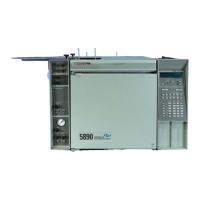
